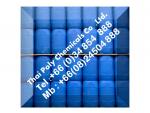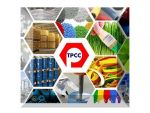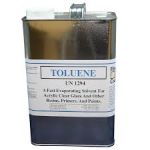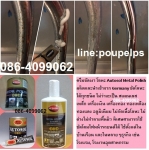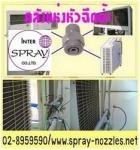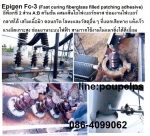Nitric acid, กรดไนตริก, ไนตริกแอซิด, ไนตริกเอซิด |
฿1 |
|
ชื่อผู้ประกาศ : คุณมิตร เบอร์โทรศัพท์ : 034854888, 034496284 โทรศัพท์มือถือ : 0878332456 ที่อยู่ : 36/5 ม.9 ต.นาดี อ.เมืองสมุทรสาคร ร้าน ไทยโพลีเคมีภัณฑ์ |
นำเข้าและจำหน่าย Nitric acid, กรดไนตริก,
ไนตริกแอซิด, ไนตริกเอซิด สอบถามข้อมูลเพิ่มเติมได้ที่ ฝ่ายขาย บริษัท ไทยโพลีเคมิคอล จำกัด โทรศัพท์
034854888, 034496284 มือถือ 0824504888, 0800160016 โทรสาร 034854899, 034496285
ไนตริกแอซิด,
กรดไนตริก, Nitric
acid
กรดไนตริก
หรือ กรดดินประสิว (อังกฤษ: Nitric acid) เป็นกรดที่มีอันตราย
หากสัมผัสจะทำให้เกิดแผลไหม้ขั้นรุนแรง กรดไนตริกนี้ ค้นพบโดยการสังเคราะห์ โดย เป็นกรดที่มีพิษที่สามารถทำให้เกิดแผลไฟไหม้อย่างรุนแรง
กรดไนตริก
(HNO3),
หรือที่ชาวบ้านทั่วไปเรียกว่ากรดดินประสิว เป็นกรดที่มีอันตรายมาก
หากสัมผัสจะทำให้เกิดแผลไหม้ขั้นรุนแรง กรดไนตริกนี้ ค้นพบโดยการสังเคราะห์ โดย Muslim
alchemist Jabir ibn Hayyan.ประมาณ ค.ศ.800 กรดบริสุทธิ์
จะใส ไร้สี หากเก็บไว้นานจะมีสีเหลือง เนื่องจากมีส่วนประกอบของ ออกไซโของไนโตรเจน
คุณสมบัติ
กรดไนตริกบริสุทธ์
100%
(ปราศจากน้ำ) จะเป็นของเหลวที่มีความหนาแน่น 1,552 กิโลกรัม/ลูกบาศก์เมตร และจะเป็นของแข็งที่อุณหภูมิ -42 ?C ลูกบาศก์ โดยจะเป็นผลึกสีขาว และจะเดือดที่อุณหภูมิ 83 ?C แต่ก็สามารถเดือดในที่ ที่มีแสงสว่าง ทั้ง ๆ ที่อยู่ในอุณหภูมิห้อง
จะมีการสลายตัวในรูปแบบไนโตรเจนไดออกไซด์ ตามปฏิกิริยา ดังนี้
4HNO3
? 2H2O + 4NO2 +
O2 (72?C)
นั่นหมายความว่า
กรดไนตริกบริสุทธิ์ที่ปราศจากน้ำเจือปน ความเก็บไว้ที่อุณหภูมิต่ำกว่า 0 ?C เพื่อป้องกันการสลายตัว ไนโตรเจนไดออกไซด์ (NO2) ที่ละลายกลับเข้าไปที่กรดไนตริกจะมีสีเหลือง
หรือเป็นสีแดงที่อุณหภูมิสูง ในขณะที่กรดไนตริกบริสุทธิ์ จะให้ไอสีขาวแพร่กระจายในอากาศ
กรดไนตริกสามารถละลายในน้ำได้ทุกอัตราส่วน ที่ความเข้มข้น 68% HNO3
จะเป็นสารละลายอะซีโอโพรพ (ของเหลวผสมที่มีจุดเดือดสูงสุดและต่ำสุดที่ สามารถกลั่นออกโดยไม่มีการสลายตัวและเป็นสัดส่วนที่แน่นอน เช่น
ไนโตรเจนออกไซด์
(NOx)
สามารถละลายในกรดไนตริกได้
ซึ่งจะละลายได้มากน้อยเพียงได้ขึ้นอยู่กับ ความเข้มข้นของออกไซด์ รวมถึงความดันไอที่อยู่เหนือของเหลว อุณหภูมิ
คุณสมบัติทางกรด
เช่นเดียวกับกรดทั่วไป
กรดไนตริกเมื่อทำปฏิกิริยากับด่าง ออกไซด์พื้นฐาน และคาร์โบเนตท์ ให้สารประกอบในรูปของเกลือ ตัวอย่างเช่น แอมโมเนียมไนเตรด ด้วยธรรมชาติของการออกซิเดชั่น กรดไนตริกจะไม่ยอมปล่อยโปรตอนของมัน นั่นคือไม่ปล่อยอะตอมของไฮโดรเจนออกไป) เมื่อทำปฏิกิริยากับโลหะและได้เกลือซึ่งจะมีสถานะออกซิไดซ์ที่สูงขึ้น จึงทำให้มีการกัดกร่อนที่รุนแรงกับโลหะ และควรใช้งานอย่างระมัดระวังเมื่อทำงานใกล้โลหะหรืออัลลอยส์ กรดไนตริกมี
H3O+.HNO3
+ H2O ? H3O+ + NO3-
ปฏิกิริยากับโลหะ
กรดไนตริกมีสามารถสูงในการทำออกซิไดซ์สูงมาก
สามารถทำปฏิกิริยากับสารอินทรีย์หลายชนิด ปฏิกิริยารุนแรงจนสามารถระเบิดได้ ทั้งนี้ขึ้นอยู่กับความเข้มข้นของกรด อุณหภูมิ และตัวลดออกซิเจน(ในปฏิกิริยาที่มีออกซิเจนเกี่ยวข้อง) ที่เกี่ยวข้อง ผลของปฏิกิริยาที่ได้มีหลากหลาย และโลหะผสมบางชนิด (อัลลอย)
(NO2).Cu + 4HNO3 ? Cu(NO3)2 + 2NO2
+ 2H2O
คุณสมบัติทางกรด
เมื่อเป็นกรดเจือจาง เมื่อทำปฏิกิริยา จะเกิดก๊าซไนโตรเจนออกไซด์เกิดขึ้น
(NO).3Cu + 8HNO3 ? 3Cu(NO3)2 + 2NO
+ 4H2O
เมื่อกรดไนตริกทำตัวเป็นตัวเร่งปฏิกิริยาออกซิไดซิ่ง
จะเกิดก๊าซไฮโดรเจนขึ้น ,เมื่อใช้กรดไนตริกเจือจาง ทำปฏิกิริยากับ แมกนีเซียม(Mg) หรือ แมงกานีส(Mn) หรือ แคลเซียม (Ca) โดยทำปฏิกิริยาที่อุณหภูมิต่ำ (เย็น) จะใช้ก๊าซไฮโดรเจน
Mg(s)
+ 2HNO3 (aq) ? Mg(NO3)2 (aq) + H2 (g)
การสร้างฟิล์มป้องกัน
(Passivation)
โครเมี่ยม
,เหล็ก และ อลูมิเนี่ยม สามารถละลายได้อย่างรวดเร็ว โดยกรดไนตริกเจือจาง ,
กรดเข้มข้นจะสร้างโลหะออกไซด์
ซึ่งจะป้องกันโลหะจากการเกิดออกซิเดชั่นในอนาคต
ปฏิกิริยากับอโลหะ
ปฏิกิริยากับอโลหะ
ยังเว้นกับซิลิคอนและกลุ่มฮาโลเจน โดยปกติจะเกิดปฏิกิริยารุนแรงซึ่งจะให้ก๊าซ
C
+ 4HNO3 ? CO2 + 4NO2 +
2H2O หรือ 3C + 4HNO3 ? 3CO2 + 4NO + 2H2O
ไอกรดไนตริกสีขาว
เราเรียกว่า 100% กรดไนตริกหรือ WFNA(White fuming nitric acid) ใกล้เคียงกับ
แอลไฮดัสซ์ไนตริก (กรดไนตริกที่ไม่มีส่วนผสมของน้ำอยู่เลย) ฟลูออไรด์ที่ใส่เพื่อเพิ่มการป้องกันการกัดกร่อนของถังโลหะ (ฟลูออไรด์จะสร้าง
การใช้งานในเชิงอุตสาหกรรม
กรดไนตริกสร้างขึ้นโดยการผสมก๊าซไนโตรเจนไดออกไซด์กับน้ำ
ในบรรยากาศที่เต็มไปด้วยออกซิเจน จะเกิดปฏิกิริยารีแอคชั่น ออกซิไดซ์
2NO2
+ H2O ? HNO2 + HNO3
2.ไนโตรเจนไดออกไซด์ + น้ำ ? กรดไนตรัส+กรดไนตริก
กรดไนตรัสสามารถสลายตัวเป็นดังนี้
3HNO2
? HNO3 + 2NO + H2O
3.กรดไนตรัส ? กรดไนตริก+ ไนตริกออกไซด์ + น้ำ)
ไนตริกออกไซด์
จะออกซิไดซ์กับไนโตรเจนไดออกไซด์
4NO
+ 3O2 + 2H2O ? 4HNO3
(nitric
oxide + oxygen + water ? nitric acid).
กรดไนตริกเจือจางสามารถทำให้เข้มข้นได้โดยการกลั่นจนมีความเข้มข้นกรดที่
68% ณ จุดนี้ ส่วนผสมอะซีโอโทรปิค
(ของเหลวผสมที่มีจุดเดือดสูงสุดและต่ำสุดที่ และลดแรงดันเพื่อป้องกันการสลายตัวของกรด ในการใช้งานในเชิงพาณิชย์ ผลผลิตที่ได้จะถูกเจือจางโดยน้ำและเป็นส่วนหนึ่งของปฏิกิริยาเคมี อย่างไรก็ตามวิธีการนี้สำคัญในการผลิต แอมโมเนียมไนเตรด จากสารตั้งต้นแอมโมเนียโดยวิธีการของ
การสังเคราะห์ในห้องปฏิบัติการ
ในห้องปฏิบัติการ
กรดไนตริกสามารถสร้างได้จาก คอปเปอร์ไอออนทูไนเตรด (copper(II)
nitrate) หรือการเกิดปฏิกิริยาเคมีระหว่าง โปแตสเซียมไนเตรด(KNO3)
กับ กรดซัลฟูริกความเข้มข้น 96% (H2SO4) (โดยทั้งสองมีน้ำหนักเท่า
ๆ กัน) และกลั่นที่อุณหภูมิ 83 ?C ซึ่งเป็นจุดเดือดของกรดไนตริก
จนกระทั่งเหลือแต่ผลึกสีขาวของโปรแตสเซียมไฮโดรเจนซัลเฟต(KHSO4), ไอของกรดไนตริกสีแดงที่ได้มาอาจเปลี่ยนเป้นไอสีขาวของกรดไนตริก
H2SO4
+ KNO3 ? KHSO4 + HNO3
ก๊าซ
NOx
สามารถกำจัดได้โดยการลดความดันลงที่อุณหภูมิห้อง (10-30 นาที ที่ 200 มิลลิเมตรปรอท หรือ 27 กิโลปาสคาล) จะให้ไอกรดไนตริกสีขาว
โดยขบวนการนี้สามารถทำได้ทั้งลดความดันและอุณหภูมิในคราวเดียวกัน
กรดไนตริกในห้องปฏิบัติการ IWFNA ถูกใช้เป็นตัวเร่งปฏิกิริยาออกซิไดซ์ในเชื้อเพลิงเหลวของจรวด IRFNA
เป็น 1 ใน 3
ขององค์ประกอบของเชื้อเพลิงเหลว สำหรับจรวดทำลาย BOMARC สารละลายผสมระหว่างกรดไนตริกกับแอลกอฮอลล์
(Nital) ถูกใช้ในขบวนการกัดผิวโลหะกำจัดรอยขีด (reveal
the microstructure) ในเชิงพาณิชย์มีการใช้ส่วนผสมน้ำกับกรดไนตริกความเข้มข้น
5-30% และกรดฟอสฟอริค 15-40%
เพื่อใช้เป็นน้ำยาทำความสะอาดเครื่องใช้ในครัวเรือน โดยสามารถกำจัดคราบของแคลเซียมและแมกนีเซียม หรือตะกรันที่เกิดจากการใช้น้ำกระด้าง
งานไม้
ในความเข้มข้นต่ำ(ประมาณ
10%),
กรดไนตริกใช้ในการทำให้ไม้สน หรือไม้เมเปิลดูเก่า โดยสีจะเปลี่ยนเป็นสีเทา-ทอง
คล้าย ๆ กับขี้ผึ้งเก่า และดูเป็นไม้เก่า
ใช้งานอื่น
ๆ กรดไนตตริกยังใช้ในการแยกโลหะออกจากแร่ เพราะว่าคุณสมบัติในการทำปฏิกิริยากับโลหะแทบทุกชนิด เมื่อใช้ผสมร่วมกันกับกรดไฮโดรคลอลิค
ความปลอดภัย
กรดไนตริกมีความสามารถในการออกซิไดซ์สูงมาก ปฏิกิริยาของกรดไนตริกกับสารประกอบสารอินทรีย์เช่น เทอร์เพนทีน (เป็นของเหลว ที่ได้จากการกลั่นเรซิ่นที่ได้จากต้นไม้ เป็นสีเหลืองเนื่องจากทำปฏิกิริยากับเจลราติน
กรดไนตริก
เหมาะสำหรับงานชุบโลหะ งานล้างคราบไขมันที่ติดบนโลหะ งานทำความสะอาด และอื่นๆ
Nitric
acid (HNO3), also known as aqua fortis and spirit of niter, is a highly corrosive strong mineral acid. The pure compound is colorless, but older samples tend to acquire a yellow cast due to decomposition into oxides of nitrogen and water. Most commercially available nitric acid has a concentration of 68%. When the solution contains more than 86% HNO3, it is referred to as fuming nitric acid. Depending on the amount of nitrogen dioxide present, fuming nitric acid is further characterized as white fuming nitric acid or red fuming nitric acid, at concentrations above 95%. Nitric acid is the primary reagent used for nitration - the addition of a nitro group, typically to an organic molecule. While some resulting nitro compounds are shock- and thermally-sensitive explosives, a few are stable enough to be used in munitions and demolition, while others are still more stable and used as pigments in inks
Physical and chemical properties
Commercially
available nitric acid is an azeotrope with water at a concentration of 68% HNO3, which is the ordinary concentrated nitric acid of commerce. This solution has a boiling temperature of 120.5 ?C at 1 atm. Two solid hydrates are known; the monohydrate (HNO3?H2O) and the trihydrate (HNO3?3H2O). Nitric acid 70% Nitric acid of commercial interest usually consists of the maximum boiling azeotrope of nitric acid and water, which is approximately 68% HNO3, (approx. 15 molar). This is considered concentrated or technical grade, while reagent grades are specified at 70% HNO3. The density of concentrated nitric acid is 1.42 g/mL. An older density scale is occasionally seen, with concentrated
The
main use of nitric acid is for the production of fertilizers. Nitric acid is neutralized with ammonia to give ammonium nitrate. This application consumes 75?80% of the 26M tons produced annually (1987). The other main applications are for the production of explosives, nylon precursors, and specialty organic
Precursor
to organic nitrogen compounds. In organic synthesis, industrial and otherwise, the nitro group is a versatile functionality. Most derivatives of aniline are prepared via nitration of aromatic compounds followed by reduction. Nitrations entail combining nitric and sulfuric acids to generate the nitronium ion, which electrophilically reacts with aromatic compounds such as benzene. Many explosives, e.g. TNT, are prepared in this way. See also: nitration. The precursor to nylon, adipic acid, is produced on a large scale by oxidation of
Rocket
propellant
Nitric
acid has been used in various forms as the oxidizer in liquid-fueled rockets. These forms include red fuming nitric acid, white fuming nitric acid, mixtures with sulfuric acid, and these forms with HF inhibitor. IRFNA (inhibited red
Niche
uses
Analytical
reagent
In
elemental analysis by ICP-MS, ICP-AES, GFAA, and Flame AA, dilute nitric acid (0.5 to 5.0%) is used as a matrix compound for determining metal traces in solutions. Ultrapure trace metal grade acid is required for such determination,
It
is also typically used in the digestion process of turbid water samples, sludge samples, solid samples as well as other types of unique samples which require elemental analysis via ICP-MS, ICP-OES, ICP-AES, GFAA and flame atomic absorption spectroscopy. Typically these digestions use a 50% solution of the purchased HNO 3 mixed with Type 1 DI Water. In electrochemistry, nitric acid is used as a chemical doping agent for organic semiconductors, and in purification
Woodworking
In
a low concentration (approximately 10%), nitric acid is often used to artificially age pine and maple. The color produced is a grey-gold very much
Etchant
and cleaning agent
The
corrosive effects of nitric acid are exploited for a number of specialty applications, such as pickling stainless steel. A solution of nitric acid, water and alcohol, Nital, is used for etching of metals to reveal the microstructure. ISO 14104 is one of the standards detailing this well known procedure. Commercially available aqueous blends of 5?30% nitric acid and 15?40% phosphoric acid are commonly used for cleaning food and dairy equipment primarily to remove precipitated calcium and magnesium compounds (either deposited from the process stream or resulting from the use of hard water during production and cleaning). The phosphoric acid content helps to passivate
Nitric
acid can be used as a spot test for alkaloids like LSD, giving a variety of
Safety
Nitric
acid is a strong acid and a powerful oxidizing agent. The major hazard posed by it is chemical burns as it carries out acid hydrolysis with proteins (amide) and fats (ester) which consequently decomposes living tissue (e.g. skin and flesh). Concentrated nitric acid stains human skin yellow due to its reaction with the keratin. These yellow stains turn orange when neutralized. Systemic effects are unlikely, however, and the substance is not considered a carcinogen or mutagen. The standard first aid treatment for acid spills on the skin is, as for other corrosive agents, irrigation with large quantities of water. Washing is continued for at least ten to fifteen minutes to cool the tissue surrounding the acid burn and to prevent secondary damage. Contaminated clothing is removed immediately and the underlying skin washed thoroughly. Being a strong oxidizing agent, reactions of nitric acid with compounds such as cyanides, carbides, metallic powders can be explosive and those with many organic compounds, such as turpentine, are violent and hypergolic (i.e. self-igniting). Hence, it
History,
The first mention of nitric acid is in Pseudo-Geber's De Inventione Veritatis, wherein it is obtained by calcining a mixture of niter, alum and blue vitriol. It was again described by Albert the Great in the 13th century and by Ramon Lull, who prepared it by heating niter and clay and called it "eau forte" (aqua fortis). Glauber devised the process still used today to obtain it, namely by heating niter with strong sulfuric acid. In 1776 Lavoisier showed that it contained oxygen, and in 1785 Henry Cavendish determined its precise composition and showed that it could be synthesized by passing a stream
nitric
acid, (HNO3), colourless, fuming, and highly corrosive liquid (freezing point -42? C [-44? F], boiling point 83? C [181? F]) that is a common laboratory reagent and an important industrial chemical for the manufacture of fertilizers and explosives. It is toxic and can cause severe burns. nitric acid, chemical compound, HNO3, colorless, highly corrosive, poisonous liquid that gives off choking red or yellow fumes in moist air. It is miscible with water in all proportions. It forms an azeotrope (constant-boiling mixture) that has the composition 68% nitric acid and 32% water and that boils at 120.5?C. The nitric acid of commerce is typically a solution of 52% to 68% nitric acid in water. Solutions containing over 86% nitric acid are commonly called fuming nitric acid. White fuming nitric acid (WFNA) is similar to the anhydrous variety, and red fuming nitric acid (RFNA) has a reddish brown color from dissolved nitrogen oxides. When treated with hydrogen fluoride, both varieties form inhibited fuming nitric acid, which has increased corrosion resistance in metal tanks,
Nitric
acid is a strong oxidizing agent. It ionizes readily in solution, forming a good conductor of electricity. It reacts with metals, oxides, and hydroxides, forming nitrate salts. Chief uses of nitric acid are in the preparation of fertilizers, e.g., ammonium nitrate, and explosives, e.g., nitroglycerin and trinitrotoluene (TNT). It is also used in the manufacture of chemicals, e.g., in making dyes, and in metallurgy, ore flotation, etching steel, photoengraving, and reprocessing of spent nuclear fuel. It is produced chiefly by oxidation of ammonia (the Ostwald process). Small amounts are produced by the treatment of sodium nitrate with sulfuric acid. Nitric acid was known to the alchemists as aqua fortis; the name is used in commerce for impure grades of it. Aqua regia is a mixture of nitric and hydrochloric acids. Niric acid is a component of
สอบถามข้อมูลเพิ่มเติมได้ที่
ฝ่ายขาย
Thai
Poly Chemicals Co., Ltd.
บริษัท
ไทยโพลีเคมิคอล จำกัด
ที่อยู่36/5
ม.9 แขวง/ตำบลนาดี เขต/อำเภอเมืองสมุทรสาคร จังหวัดสมุทรสาคร รหัสไปรษณีย์74000
Tel.:
034854888, 034496284
Fax.:
034854899, 034496285
Mobile:
0824504888, 0800160016
Website
: www.thaipolychemicals.com
Email1 : thaipolychemicals@hotmail.com
Email2 : info@thaipolychemicals.com
ไนตริคแอซิดไนตริกเอซิดกรดไนตริกacidกรดไนตริคNitricไนตริกแอซิด

